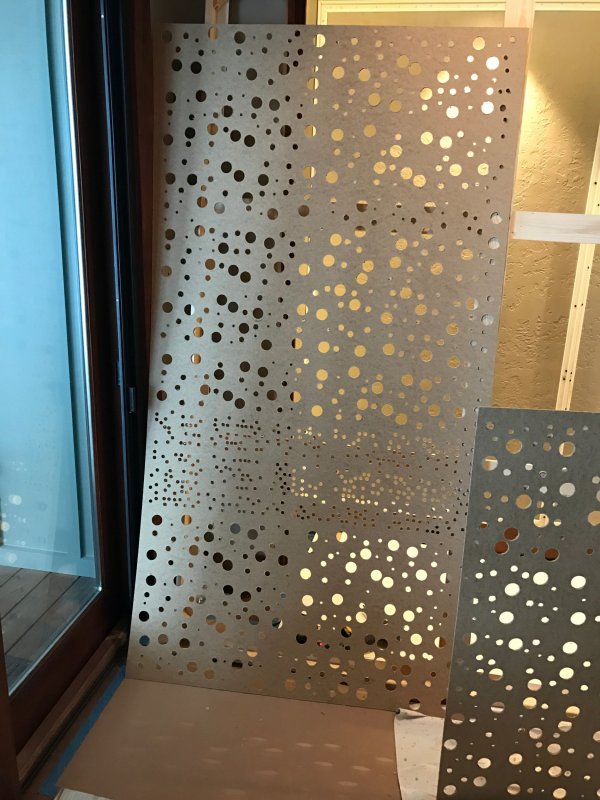When Bonnie engineered my remodel, she included in her modeling some recent research where the amount of treatment needed before a change was ”heard” was studied. Somewhere I have the link, but to my recollection a room was used where every wall (in individual portions) could be changed to a flat surface, a diffusive surface, or an absorptive surface. I seem to remember not until ~ 2/3 of the room was “treated” did listeners detect much difference. I am summarizing a research study, and probably poorly.
Ultimately, my walls include custom BAD panels, and I have of course heard pros and cons to BAD panels. Commercials ones i have seen (RPG) seem to vary the number and spacing of “holes” but I had not seen varying the size of the holes. In my application there are different drillings in an area ~ 18” centered on ear height when seated.

My room sounded pretty damn good before we remodeled but not when volume increased > ~ 90db. Then the rooms problems caused the sound to become “confused” just too much uncontrolled energy. Things improved greatly after remodeling and bass tonality, impact, and depth vastly improved.
Random room treatment is trial and error. Even an engineered solution may not get you the results you hope for (sadly many examples of this.) Every room is unique.
Ultimately, my walls include custom BAD panels, and I have of course heard pros and cons to BAD panels. Commercials ones i have seen (RPG) seem to vary the number and spacing of “holes” but I had not seen varying the size of the holes. In my application there are different drillings in an area ~ 18” centered on ear height when seated.

My room sounded pretty damn good before we remodeled but not when volume increased > ~ 90db. Then the rooms problems caused the sound to become “confused” just too much uncontrolled energy. Things improved greatly after remodeling and bass tonality, impact, and depth vastly improved.
Random room treatment is trial and error. Even an engineered solution may not get you the results you hope for (sadly many examples of this.) Every room is unique.


